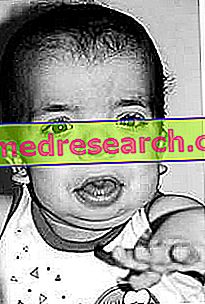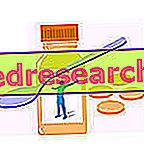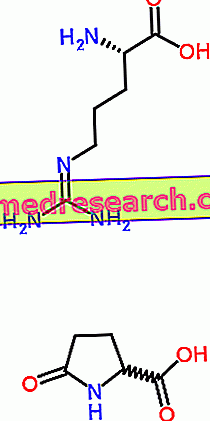Generality
Nail fungi are organisms belonging to the Marasmiaceae family, to the Genus Armillaria and to the Specie mellea ; the binomial nomenclature of the small mushroom mushrooms "properly called" is therefore Armillaria mellea .

The honey mushrooms are edible (and good) only once cooked . In fact, they contain a thermolabile protein toxin, which is inactive at 65-70 ° C; consequently, the pegs can be safely consumed by boiled meat (at least for 10 minutes), as long as you have the foresight to eliminate the cooking water . Obviously, also their use in risottos, in pasta seasoning, on bruschetta, in roasts etc. must respect this precaution. Ultimately, the addition of nails in the recipes should never be done raw and this is also true when the preparation is to be cooked later (as the cooking water of the nails would remain in the edible portion).
"Chiodino" is a vulgar, generic noun, which often also indicates other types of mushrooms. To the same Genus, for example, belong the "false nail", identified by the species Armillaria tabescens (edible mushroom and BUONO da cotto, but TOXIC from CRUDO) and Armillaria gallica (edible mushroom and OTTIMO da cotto, but VELENOSO da CRUDO). Other potential misunderstandings involve mushrooms belonging to different families, some of which may be DEADLY ALSO COOKED!
In the gastronomic field (among the INESPERTI), another mushroom often misunderstood with the nail is the piopparello or pioppino, which belongs to the species Agrocybe aegerita (Bolbitiaceae Family).
Honey mushrooms, false nails and poplars are ALL edible mushrooms (nails and false nails from COTTI, only pioppino even raw) and, to be honest, the Armillaria tabescens is sometimes considered even more valuable than mellea . It is important to emphasize that honey mushrooms are considered products of excellent gastronomic value; in some areas they are even considered superior to the most famous porcini .
WARNING! The morphological description of the honey mushrooms was omitted from the article. This is a particularly delicate subject that requires a precise teaching and verification process. Self-study is strongly discouraged and it is advisable to attend the appropriate mycological training / habilitation courses.
Nutritional Features
| Composition for: 100g of Fungi Chiodini | ||||
 | ||||
| Edible part | 100.0% | |||
| water | 89.0g | |||
| Protein | 2.1g | |||
| Prevailing amino acids | - | |||
| Limiting amino acid | - | |||
| Lipids TOT | 0.7g | |||
| Saturated fatty acids | 0.15 g | |||
| Monounsaturated fatty acids | 0.20g | |||
| Polyunsaturated fatty acids | 0.38g | |||
| Cholesterol | 0.0mg | |||
| TOT Carbohydrates | 0.1g | |||
| Starch | 0.0g | |||
| Soluble sugars | 0.1g | |||
| Ethyl alcohol | 0.0g | |||
| Dietary fiber | 6.8g | |||
| Soluble fiber | - g | |||
| Insoluble fiber | - g | |||
| Power | 15.1kcal | |||
| Sodium | 5.0mg | |||
| Potassium | 429.0mg | |||
| Iron | 0.9mg | |||
| Football | 4.0mg | |||
| Phosphorus | 121.0mg | |||
| Thiamine | 0.10mg | |||
| Riboflavin | 0.13mg | |||
| Niacin | 4.20mg | |||
| Vitamin A (RAE) | 0.00μg | |||
| C vitamin | 5.00mg | |||
| Vitamin E | 0.12mg | |||
Nail mushrooms are extremely hypo-caloric foods, that is, they provide very little energy.
The calories come mainly from proteins, however scarce and of little interesting biological value. Lipids are not significant, although they show a prevalence of polyunsaturated (good) fatty acids; the carbohydrates (exclusively simple) are irrelevant. On the other hand, tacks are rich in water and dietary fiber.
As far as the saline aspect is concerned, honey mushrooms bring little sodium and, to say the least, considerable amounts of potassium. This characteristic makes them suitable food for the diet against hypertension, even if this involves the elimination of the discretionary salt (it would be useless to eat foods with little sodium then adding the cooking salt); moreover, for the same purpose, it would also be necessary to verify what could be the level of solution and dispersion of potassium in the cooking water.
Honey mushrooms can also be easily included in the diet against obesity, diabetes, hypertriglyceridemia and hypercholesterolemia.
The iron content is not very high, but it is still useful for achieving the recommended daily ration (high especially for fertile women).
The vitamin intake is not the best and the only noteworthy concentration is that of niacin (vit. PP).
Being mushrooms, it is strongly advised NOT to exceed with the portions and to consume them with a frequency much lower than the vegetables (foods with which they share the nutritional function); mushrooms are all considered foods to be consumed in moderation and, perhaps for this reason, they are not included in the classification of the 7 basic food groups.
Particular attention should be paid to the diet of pregnant women, who could (and should) avoid the consumption of tacks (but also of other fungi in general, especially raw mushrooms). These foods are also not recommended in the feeding of the nurse (toxins could be dispersed in the milk) and early childhood after weaning (as the liver of very young could have a lower capacity to metabolize certain unwanted molecules).
The average portion of honey mushrooms, cooked boiled and drained, could be around 50-150g (7-20kcal).
Gastronomic Advice and Video Recipes with Chiodini Mushrooms
Honey mushrooms are suitable for a multitude of culinary applications. A particularly interesting recipe is: "Funghi Chiodini and Salsicce in Rosso".
Our personalcooker Alice, on the other hand, offers many innovative recipes that can include honey mushrooms; these are:
- Vegetable Scallops with Mushrooms
- Risotto with mushrooms and hazelnuts
- Potato and Mushroom Roll
- Salted Pie with Mushrooms
- Pizza Kamut with Corn, Ricotta and Mushrooms
- Bread and mushroom pizzas
- Voul au vent of very fast bread
See all recipes with tinned or pioppini mushrooms
Furthermore, for those not familiar with food, the video is available: Clean the Mushrooms.
How to Clean Mushrooms
X Problems with video playback? Reload from YouTube Go to Video Page Go to Video Recipes Section Watch the video on youtube



